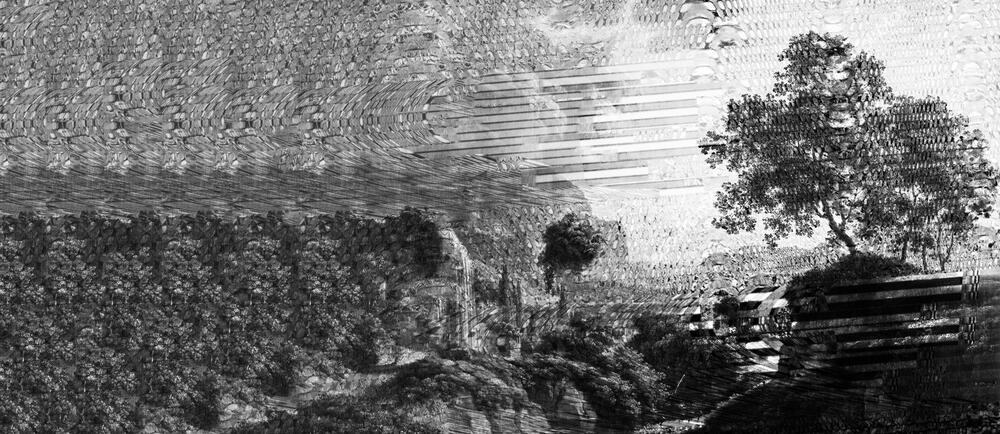Deep Steward
excerpts from "Deep Steward" by Theun Karelse
When landscape appeared in European art it emerged first as a landscape of symbols. The Gothic depiction of Earth was populated with features that were primarily there as convenient symbols for a narrative. At present, landscape is emerging in artificial minds. Some of the visual and conceptual similarities with early landscape painting are striking. Both depict landscapes where features are tagged placeholders in a larger narrative geography.
Until recently the ability to make sense of the environment was limited to biological beings, but machines are starting to blur those lines. Slowly the debate around machine intelligence is moving from human-centered preoccupations—like job security, privacy and politics—to the impact of these technologies on non-human lives. The worldview of technology isn’t neutral.
Should our machines learn exclusively from humans, should their natural habitat be corporate, or do intelligent machines need training-forests, like orphaned Orangutans in Indonesian rehabilitation programmes? Do the artificial agents that are currently taking seat in corporate boardrooms need to spend their weekends floating around coral-reefs, volunteering at an organic farm, or wandering the tundra with reindeer to get attuned to the other 99.99% of life?
Spectres in Change
Excerpts by "Spectres in Change Fieldnotes #1" by FoAM (Maja Kuzmanovic and Nik Gaffney)
Is the mere act of observing an act of caring? How can this noticing, witnessing and recording become a transformative, re-animating force, something beyond representation? A noticing that frames spectral existence with real possibilities and propositions. Abstract data become tactile sensations, beckoning rather than elucidating. Could we think of fieldwork as a careful engagement, an attunement reminiscent of Ampére’s “tâtonnement”, a “feeling around” the landscape? Devising instruments to lightly brush against ecological transformations, allowing us to touch and be touched by them. Perhaps we would design observatories where layered times can be sensed at a human-scale. A collective experience hovering between the spectral and the material. Or conjure a process of environmental interference where art forms compost. A ritual aspiring to express what has been, be present with what is and shape what might become. An experiment in knowing when (not) to interfere.

The necessity of changing methods is all the more obvious when it is a question of finding the explanation of a phenomenon that nature offers in all of its complication. There, where the givens are by their very existence more complicated than the results we seek, direct synthesis becomes inapplicable, and it is necessary to take recourse either to direct analysis if possible, or to indirect synthesis, to feeling around (tâtonnement) and explanatory hypotheses. André-Marie Ampère (in Romantic Machine)
Dust and Shadow Reader Vol. 2. Previous: resilience attunement imagination. Next: paraphotomancy

